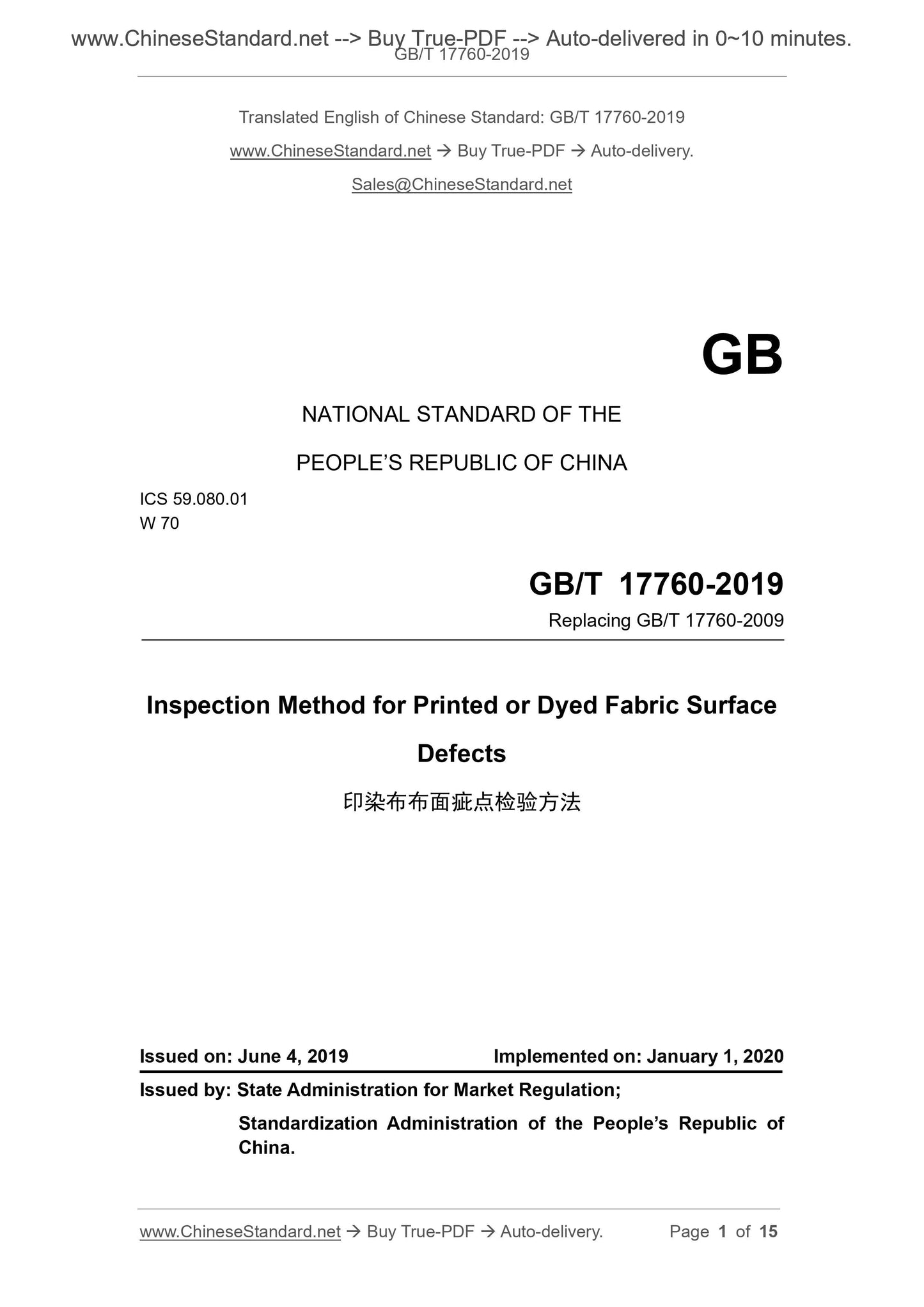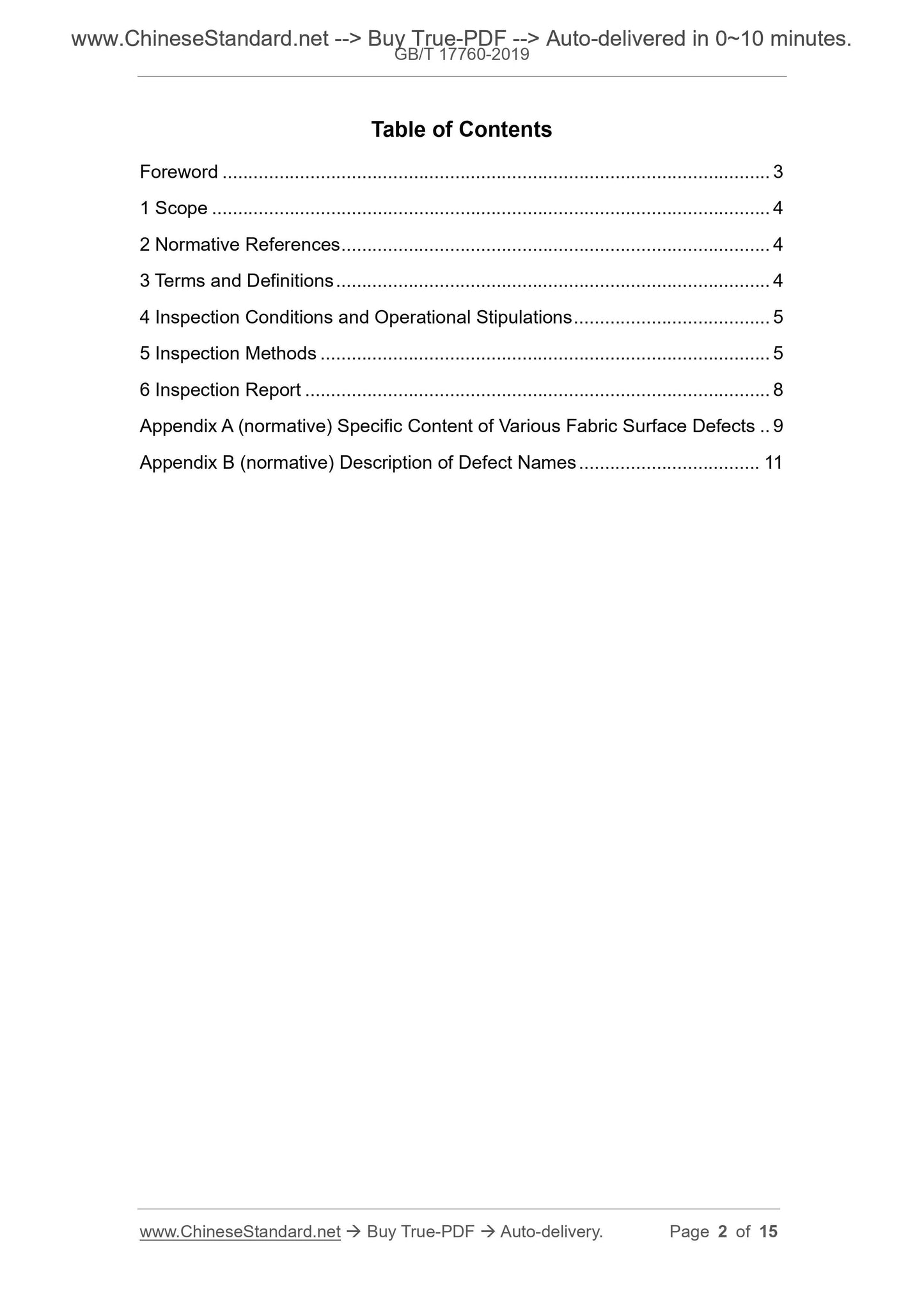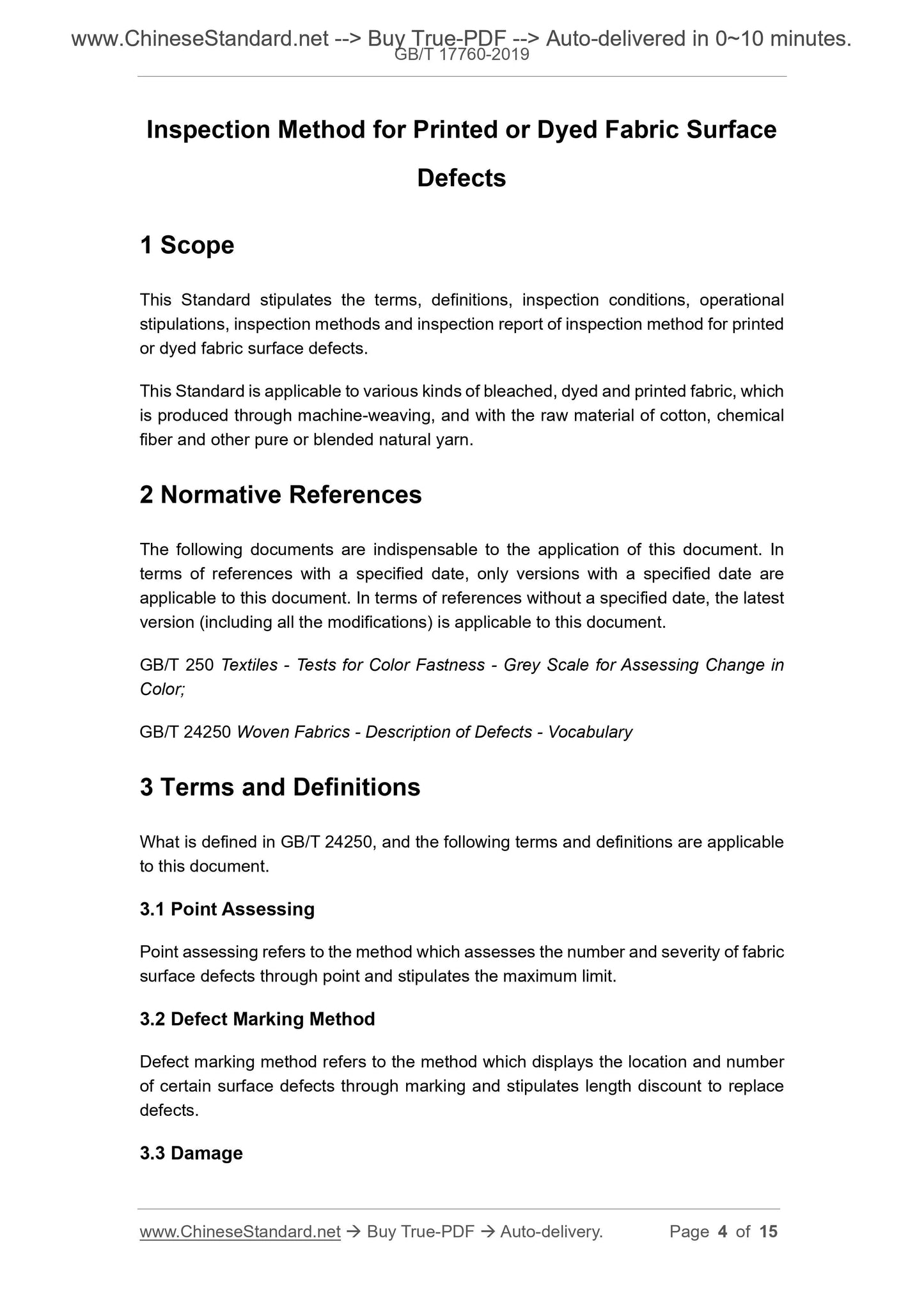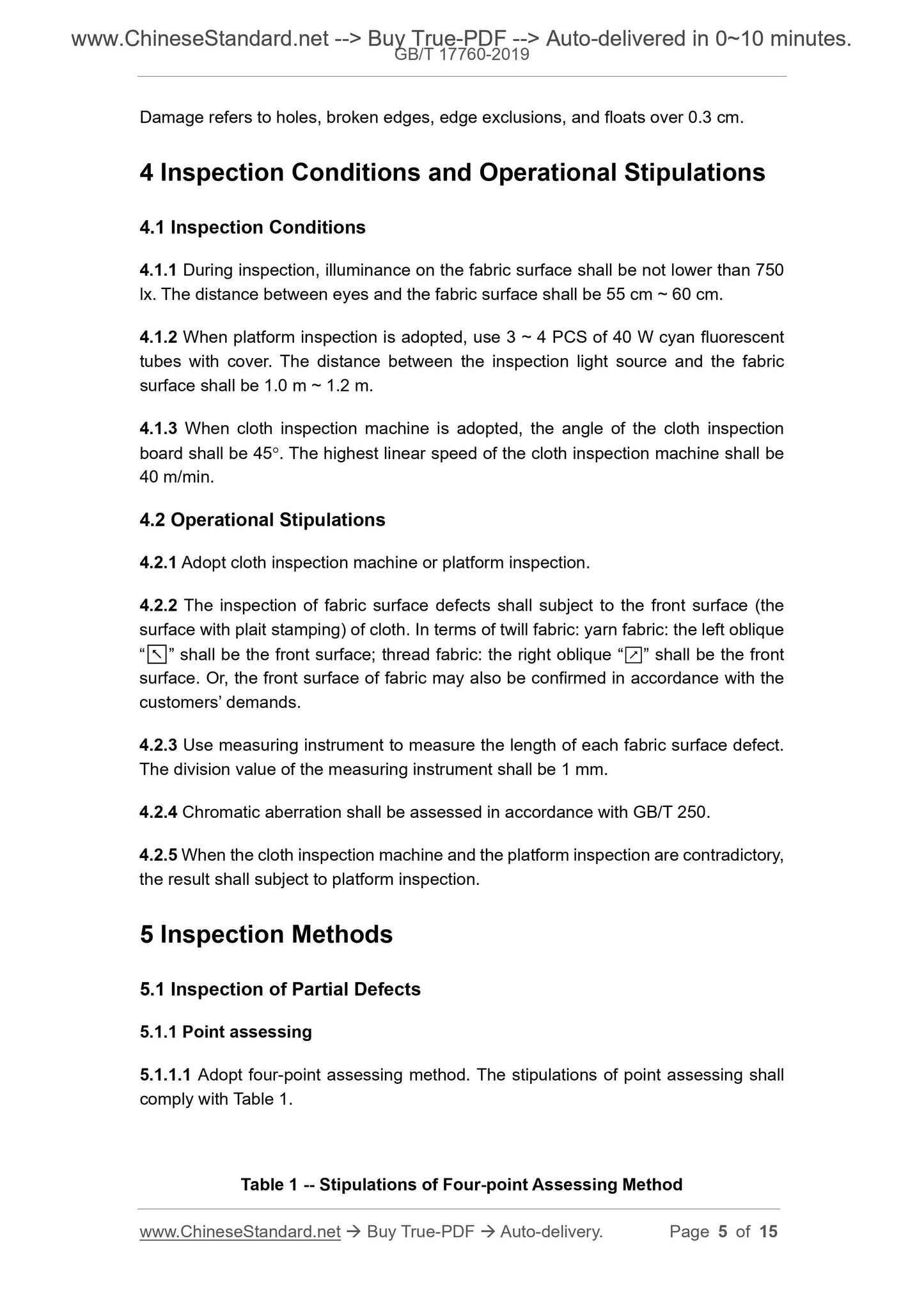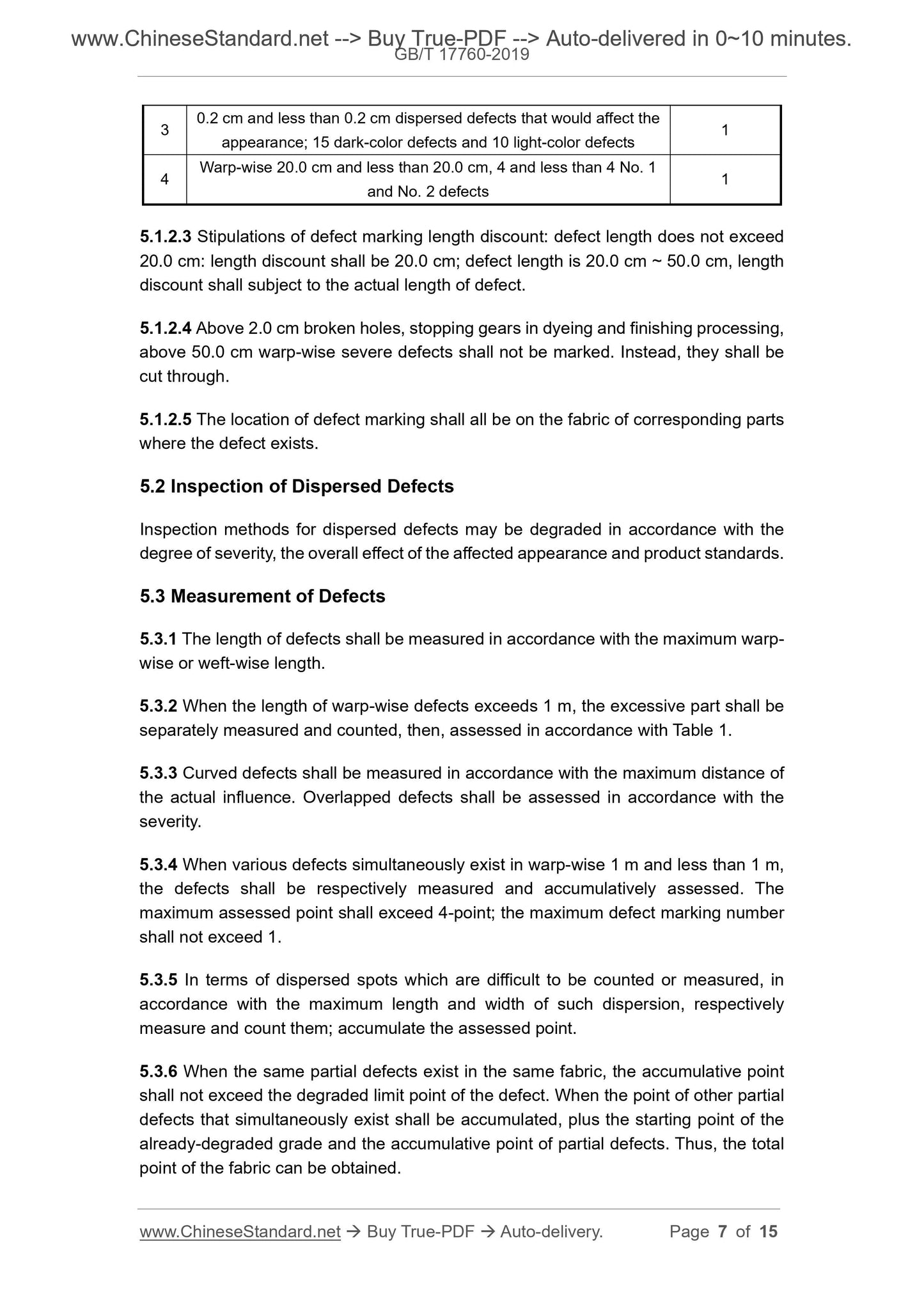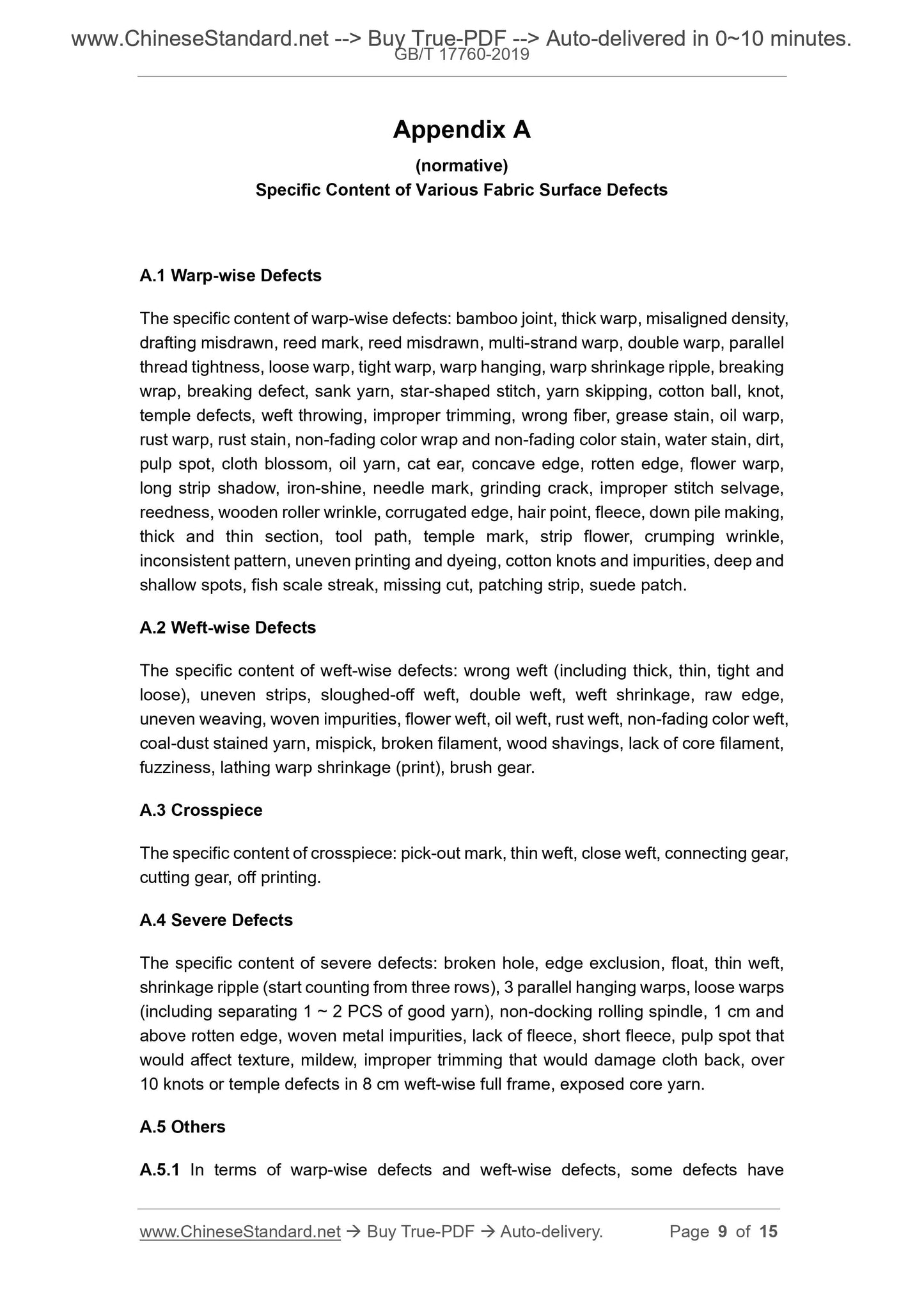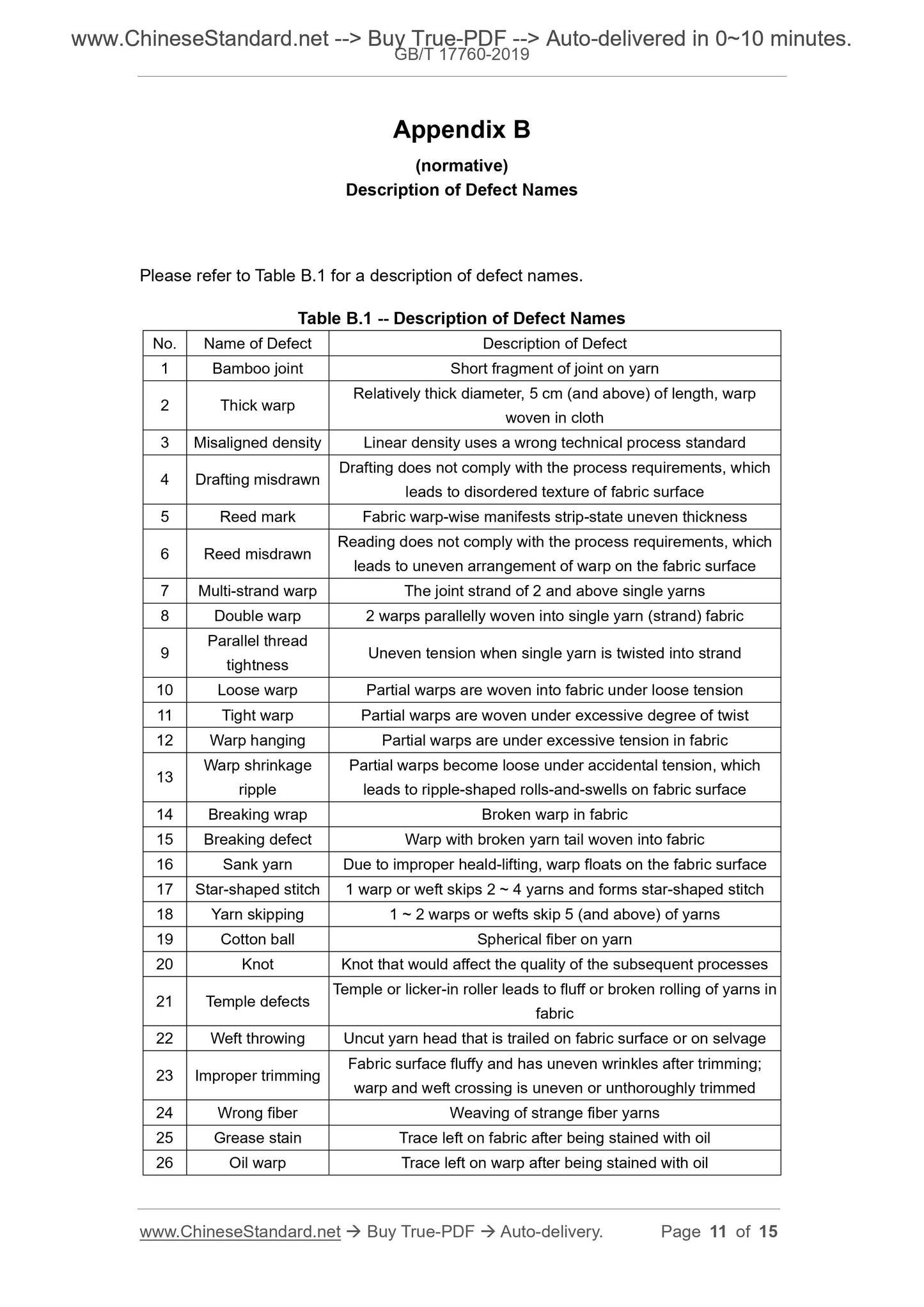1
/
of
7
www.ChineseStandard.us -- Field Test Asia Pte. Ltd.
GB/T 17760-2019 English PDF (GB/T17760-2019)
GB/T 17760-2019 English PDF (GB/T17760-2019)
Regular price
$130.00
Regular price
Sale price
$130.00
Unit price
/
per
Shipping calculated at checkout.
Couldn't load pickup availability
GB/T 17760-2019: Inspection Method for Printed or Dyed Fabric Surface Defects
Delivery: 9 seconds. Download (and Email) true-PDF + Invoice.Get Quotation: Click GB/T 17760-2019 (Self-service in 1-minute)
Newer / historical versions: GB/T 17760-2019
Preview True-PDF
Scope
This Standard stipulates the terms, definitions, inspection conditions, operationalstipulations, inspection methods and inspection report of inspection method for printed
or dyed fabric surface defects.
This Standard is applicable to various kinds of bleached, dyed and printed fabric, which
is produced through machine-weaving, and with the raw material of cotton, chemical
fiber and other pure or blended natural yarn.
Basic Data
| Standard ID | GB/T 17760-2019 (GB/T17760-2019) |
| Description (Translated English) | Inspection Method for Printed or Dyed Fabric Surface Defects |
| Sector / Industry | National Standard (Recommended) |
| Classification of Chinese Standard | W70 |
| Classification of International Standard | 59.080.01 |
| Word Count Estimation | 10,115 |
| Date of Issue | 2019-06-04 |
| Date of Implementation | 2020-01-01 |
| Issuing agency(ies) | State Administration for Market Regulation, China National Standardization Administration |
Share
